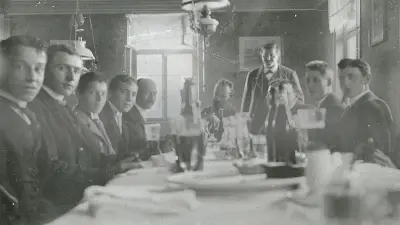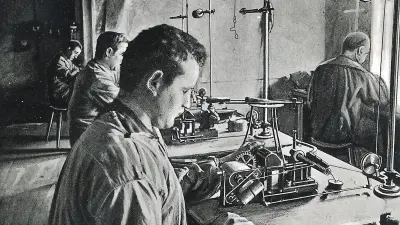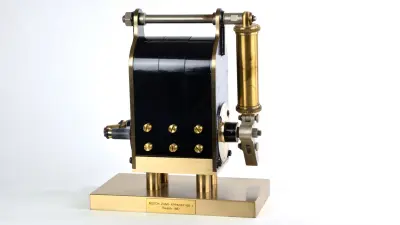The first Bosch magneto — more than only a common order

The young Robert Bosch did all the precision-mechanical and electrical-engineering work that came his way in order to keep his business running.
For the most part, this involved installing low-voltage equipment such as telephone terminals, electric bells, door openers, remote electrical water-level indicators, and later pneumatic tube pipelines and electric lighting.
Yet despite this extensive portfolio, orders were often sparse during the early years, leaving Bosch struggling to keep his workforce busy and pay their wages. Still, he wanted to do the best he could by them.
Money for the workers

Sometimes on Friday afternoon, he had to ask a neighboring wealthy shop owner for money tio pay his workers. In addition, he needed more capital to invest in modern equipment for his workshop. He therefore borrowed money from his mother and took out loans for which his family acted as guarantor.
Robert Bosch later referred to his initial years in business as “a shambles.” The year 1892 was particularly difficult for the new business. A lack of orders forced Robert Bosch to let go of 22 of his 24 associates.
A main pillar
In these times of ups and downs, it was the magneto ignition that helped to keep the small company in balance. These devices generated an electric spark to ignite the air-fuel mixture in the cylinder of a stationary internal-combustion engine.
Robert Bosch had come across the invention more or less by chance. In 1887, a mechanical engineer had asked him to reproduce a magneto ignition device he had seen on an engine at a company in Schorndorf. Robert Bosch was happy to take up the challenge. He made his way to Schorndorf, some 20 miles east of Stuttgart, to study the design of the gadget himself.
First delivery
The engine was equipped with a device produced by the Cologne based company Deutz, a maker of internal-combustion engines. After contacting Deutz and ascertaining that the magneto was not patented, Robert Bosch set about reproducing it. The very first Bosch ignition device was duly delivered to Schmehl & Hespelt, a mechanical engineering company situated to the north of Stuttgart in the small town of Moeckmuehl, on October 8, 1887. But Robert Bosch did not limit himself to simply reproducing the magneto ignition device; he also refined it, true to his later guiding principle of continuous improvement. He replaced the bar magnets with U-shaped ones, not only making the new device lighter and less prone to failure, but also enhancing its performance.

Breakthrough
Over the next few years, Bosch manufactured the magneto ignition device in increasing – albeit still small – quantities. In 1888 he delivered nine units, but by 1891 he was making more than 100, with the magneto ignition device now accounting for over 50 percent of the workshop’s sales.
But it was only after the brilliant idea to improve the magneto for the use in automobiles that made the mechanic Robert Bosch a successful factory owner.
Author: Dietrich Kuhlgatz
